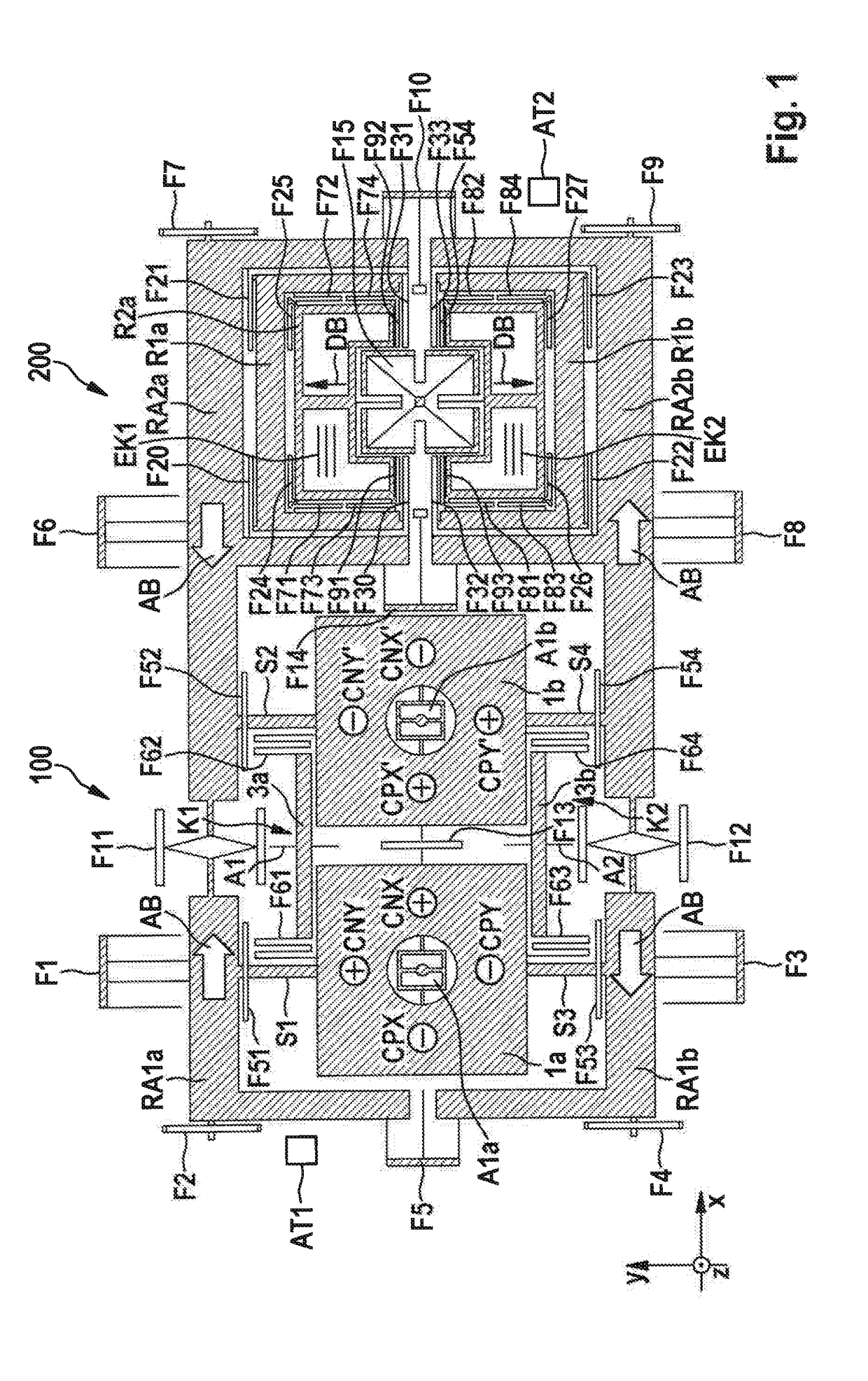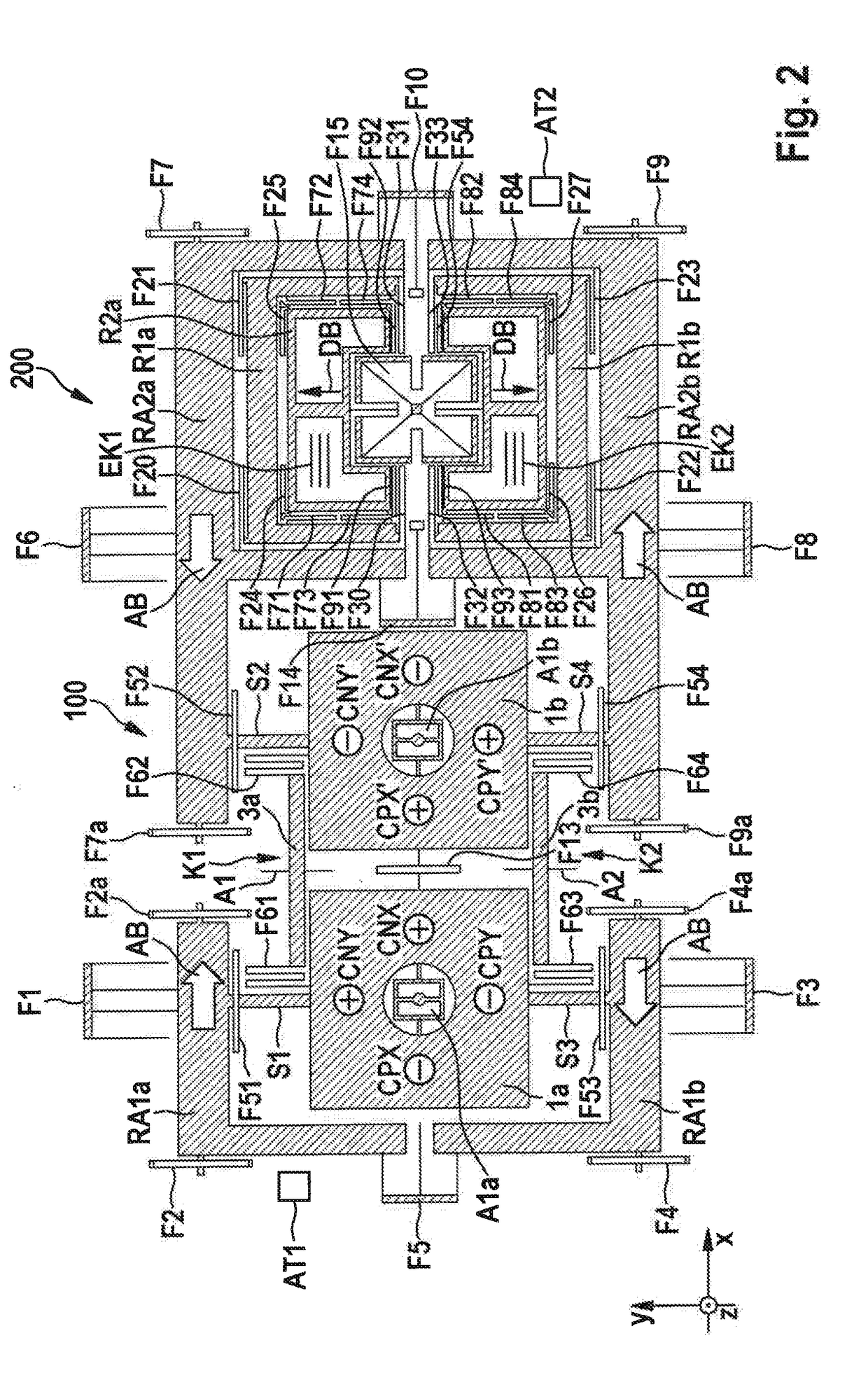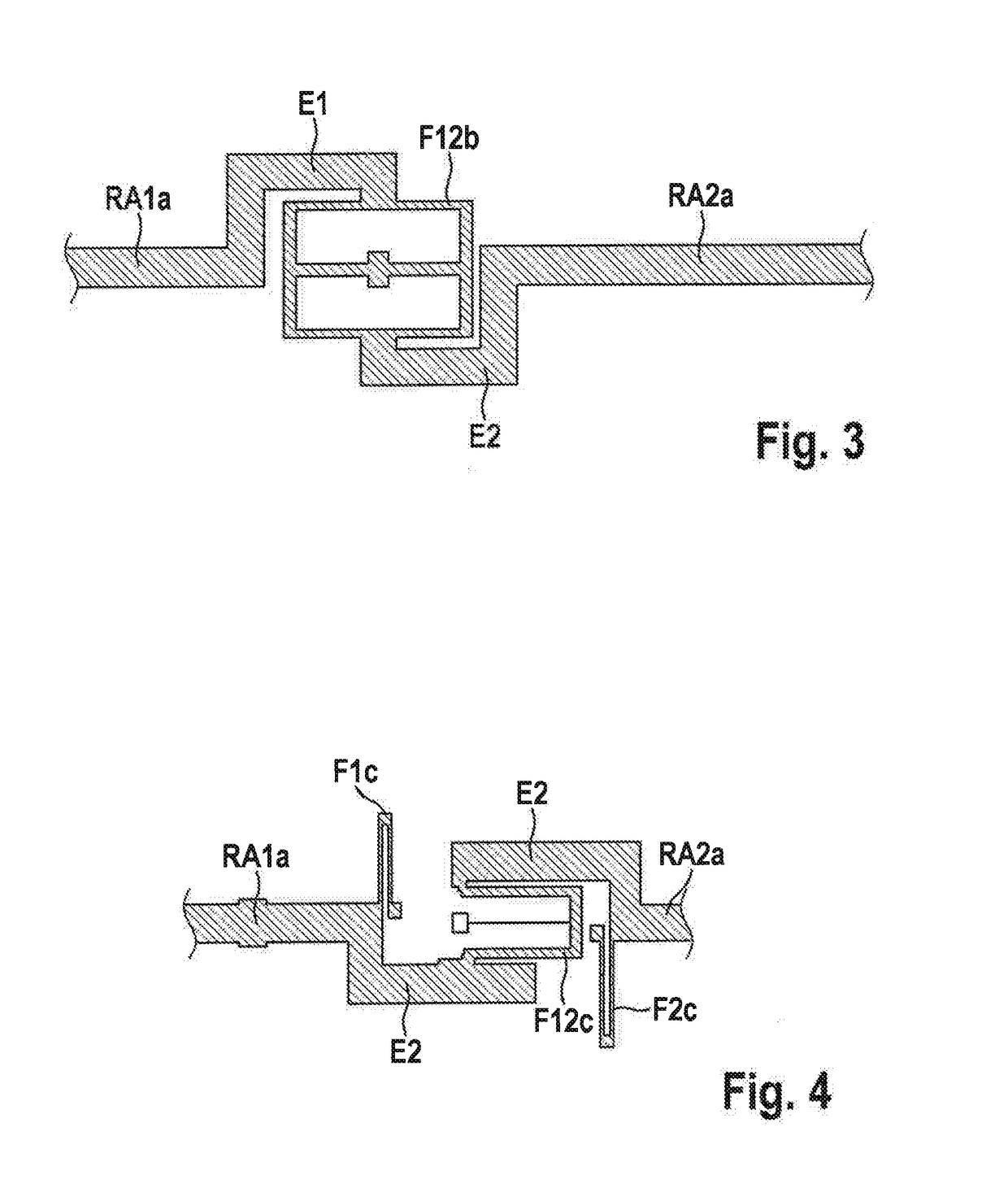Micromechanical rotational rate sensor system and corresponding production method
- Summary
- Abstract
- Description
- Claims
- Application Information
AI Technical Summary
Benefits of technology
Problems solved by technology
Method used
Image
Examples
first embodiment
[0082]The first embodiment has a first folded spring L1 that is capable of rotation about the first axis (z axis) and is capable of tilting about the second axis (y axis) and third axis (x axis).
second embodiment
[0083]The second embodiment has a differently folded spring L2 that has the same mechanical properties.
[0084]The third embodiment A1′″ has a combination of elastic springs L3a, L3b, L3c that are connected to one another via rigid curved bow elements RK1, RK2. The third embodiment A1′″ is also capable of rotating about the first axis (z axis) and of tilting about the second axis (y axis) and the third axis (x axis).
[0085]Suspension devices A′, A″, A′″ are each centrally anchored on the substrate (not shown).
[0086]FIG. 7 shows an enlarged detail representation of a first alternative type of coupling of the rotor devices with the drive frame.
[0087]In the alternative type of coupling according to FIG. 7, webs S1 through S4, with which first rotor device 1a and second rotor device 1b are connected to first drive frame RA1a, RA1b and to second drive frame RA2a, RA2b, are realized with a smaller thickness D1 than are the adjacently situated springs F51, F52, F53, F54 and rotor devices 1a, ...
PUM
 Login to View More
Login to View More Abstract
Description
Claims
Application Information
 Login to View More
Login to View More - R&D
- Intellectual Property
- Life Sciences
- Materials
- Tech Scout
- Unparalleled Data Quality
- Higher Quality Content
- 60% Fewer Hallucinations
Browse by: Latest US Patents, China's latest patents, Technical Efficacy Thesaurus, Application Domain, Technology Topic, Popular Technical Reports.
© 2025 PatSnap. All rights reserved.Legal|Privacy policy|Modern Slavery Act Transparency Statement|Sitemap|About US| Contact US: help@patsnap.com



